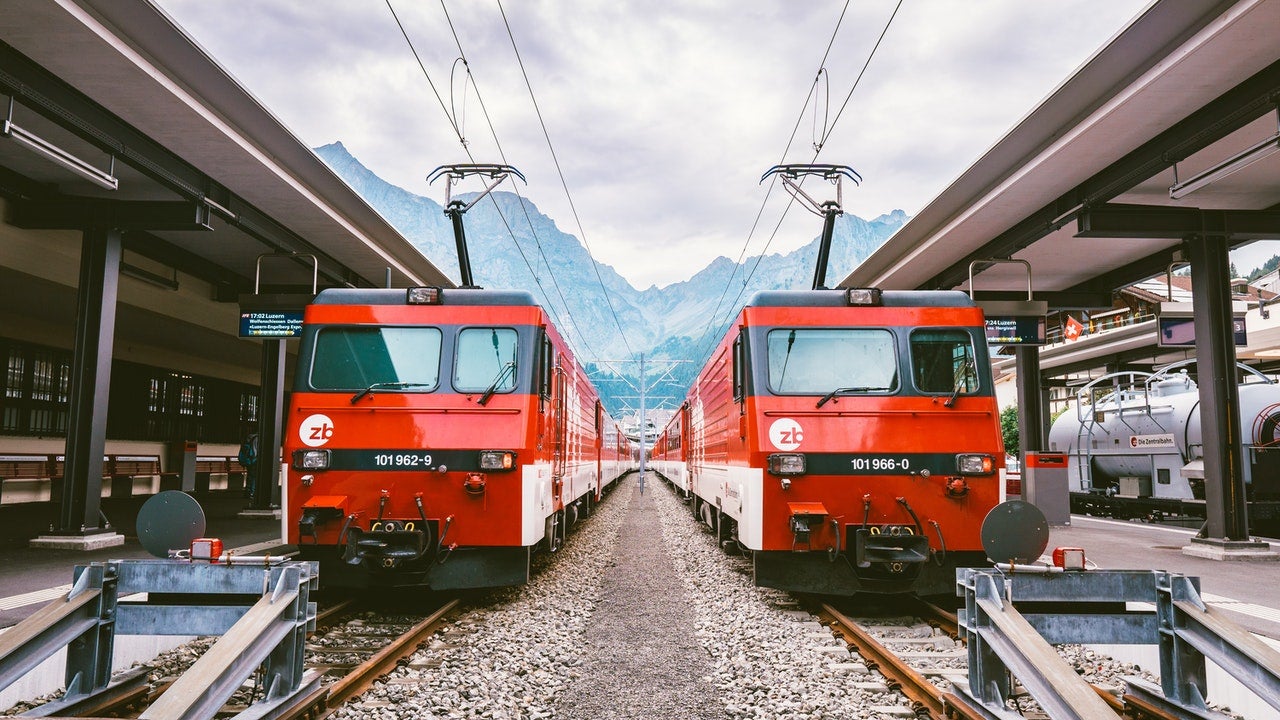
Railway passenger numbers were hit globally as a result of the Covid-19 pandemic and have not returned to pre-Covid levels.
Ireland witnessed a fall in Q1 of 2021 of 85% and Greece 66% compared with Q1 of 2020, while others – including the UK – are starting to see almost pre-Covid levels of travellers.

Discover B2B Marketing That Performs
Combine business intelligence and editorial excellence to reach engaged professionals across 36 leading media platforms.
To attract people back to the railway network, industry stakeholders believe that regaining trust is what is most needed, assuring the public that their return to railway travel will be as safe as possible.
“Enabling a safe return to railway travel” was the title of an International Railway Summit (IRITS) conference held on 23 September. Focusing on video-powered passenger protection, the webinar highlighted how technology and the use of analytics can improve railway services, making passengers more comfortable and avoiding congestion and anti-social behaviour.
Here is what we learnt.

US Tariffs are shifting - will you react or anticipate?
Don’t let policy changes catch you off guard. Stay proactive with real-time data and expert analysis.
By GlobalDataEngineering to restore trust
According to Madrid Metro head of facilities and information systems division Isaac Centellas Garcia, engineering has proved fundamental for dealing with the Covid-19 pandemic and it will continue to do so as countries including Spain return to pre-Covid life.
To preserve the health and safety of both travellers and personnel during the peak of the pandemic, Madrid Metro implemented several actions, from work from home practices for a great number of employees to splitting the staff working in the company’s maintenance and monitoring operations centre for facilities and telecommunications to avoid unnecessary contact.
“We also made improvements on the app to increase the information that was provided to our customers, gathering data to optimise the flow of passengers and waiting times [as well as] providing information on in-coming trains,” explained Centellas Garcia.
To control passenger flows in stations, Madrid Metro used big data to compare the modelling of stations’ entry flow with the actual network flow, getting the information on trains through the centralised traffic control system network, known as CTC, and information on passengers from the turnstiles.
“These allow us to act on the access system and passenger information system so we can limit the number of people accessing stations,” he continued. The technology reports passenger information flow in real time so that travellers can plan the trip, as the system sends a message to passengers’ phones, restoring trust.
“From an engineering point of view, we have to make sure that public transport networks keep on being the backbone of mobilities in cities, promoting intermodal transport systems,” he added. “We have to place our customers at the centre of our decisions, giving them transparent communication and real-time information.”
Body temperature controls
For Carlos Freire Coloma, safety and security manager at Spanish public company ADIF, body temperature controls will be the way forward when dealing with Covid-19 and possible future pandemics.
As the company responsible for the design of the Spanish railway network, ADIF conducted a trial in Madrid’s Atocha and Barcelona’s Sants stations to see if body temperature controls could prevent passengers with a body temperature higher than 37.5C and not wearing masks correctly from embarking on high-speed trains.
The body temperature checks – which have an error margin of less than 0.5 – are positioned in the high-speed trains’ lobby where access is restricted to high-speed passengers and railway personnel.
The system – placed on the floor – is contactless and can be taken from a distance of three to six metres.
“Passengers with a temperature lower than 37.5C continue to security controls and, if everything checks, are allowed onto the train but passengers with a body temperature higher than 37.5C are separated from the rest and taken into for a second measurement,” said Freire Coloma.
A year and four million passengers later, ADIF reported 274 alerts and 14 cases of people that were not allowed aboard a train.
“On the cons side, there are significant economic costs due to the human and technical resources that are required in addition to a limited functionality due to the system not being implemented in all stations,” he added.
“Focusing on the pros, the detection of possible Covid-19 cases works, and it helps prevent contagion on high-speed trains and increases passengers’ confidence to use public transportation,” Freire Coloma concluded.
Video surveillance for security
Criminal incidents have always taken place on railway networks, from theft and vandalism to more severe ones such as assaults or shootings. In the last 18 months, though, hazards have increased as a result of the Covid-19 pandemic.
Qognify key accounts senior manager Frank Müller believes that instead of putting a lot of personal effort, the industry should rely more on video surveillance technologies that comply with legal requirements.
“From our point of view, it is a matter of using products and technologies that can meet the requirements of public transport companies,” said Müller. “This includes features such as efficient support for operators in monitoring and researching incidents.”



